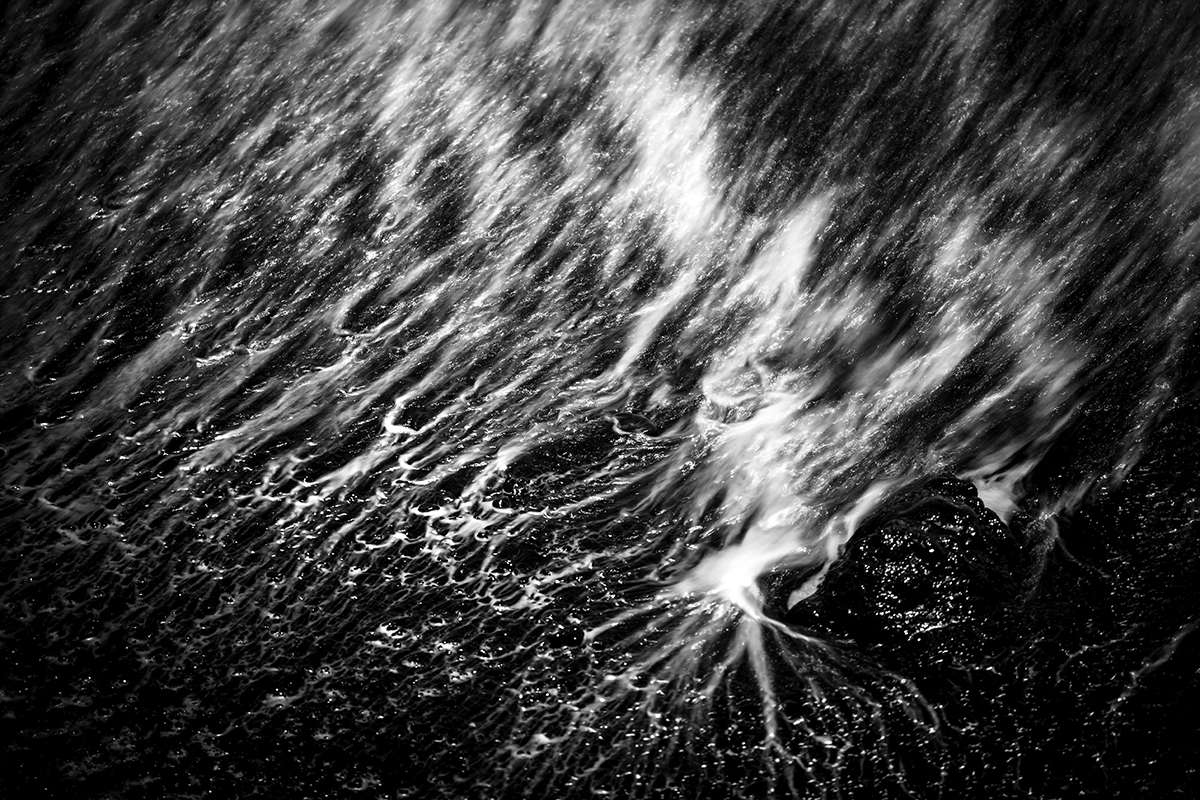Fine-Art Travels, in Black and White
Greg Piazza used his 70-200mmVC G2 and 150-600mm VC G2 lenses to shoot the sand dunes of Vegas and the crashing waves of Maui.
More Photo Tips | Video Gallery | Photo Gallery | Enewsletter sign-up
By Jenn Gidman
Images by Greg Piazza
When Greg Piazza traveled to Las Vegas in January, he made a pit stop in the surrounding desert to capture photos of the gracefully curving sand dunes. “I didn’t have any expectations on what I’d be shooting, or what the light would be like,” the Texas photographer says. “I took pictures throughout the day for varying perspectives, but when I was shooting in midday, the dunes became white and flat. It was the evening photos that gave me the contrast I was really looking for.”
Then, when Greg Piazza headed to Maui at the end of May, he knew he wanted to capture even more abstract, fine-art-style photos in that vein, in addition to the more typical vacation-type shots people often take there. He also knew the creative images he sought would likely involve waves, waterfalls, and other elements with “flow,” to lend a sense of motion to his pictures. “Plus, because everything in Hawaii is usually shot in lush, vibrant color, I decided to put a little twist on things and transform these photos into black-and-whites, which served as a perfect complement to my sand dune photos,” he says.
To capture all of these abstract, high-contrast scenes, Greg relied on his Tamron SP 70-200mm F/2.8 VC G2 and SP 150-600mm VC G2 telephoto zoom lenses. “I’ve had the 150-600 since 2018,” he says. “It’s been my workhorse for shooting landscapes and wildlife, allowing me to shoot a variety of subjects from afar. I also have the SP 24-70mm F/2.8 VC, which I use quite often. But I found myself craving a lens that covered the focal-length range right in between those two lenses. That’s where the 70-200mm comes into play. I got that lens right before I went to Maui, and it filled in that gap wonderfully for me. All three lenses offer superb image quality and Tamron’s proprietary Vibration Compensation (VC) image stabilization, so I can be sure even my handheld photos are sharp—an important factor for photography in general, but especially in fine-art images.”
Read on for insight into Greg’s mindset as he created each image, and how he came up with a unique name for each—a process he undertakes for each and every photo he shoots.
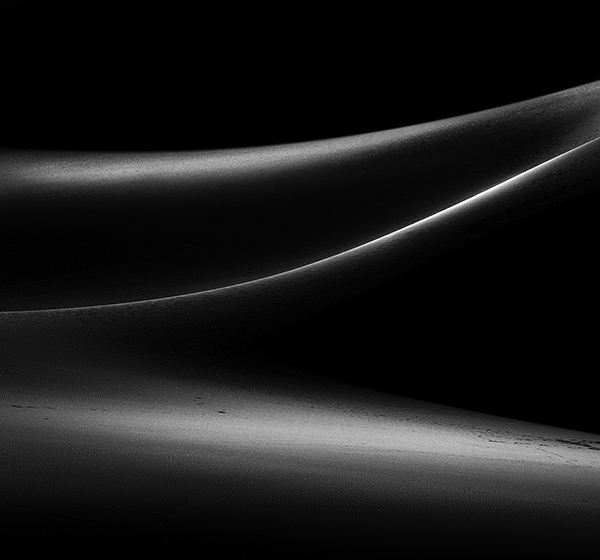
150-600mm (210mm), F/10, 1/60 sec., ISO 125
Click image to view larger
I decided to focus on just one section of the dunes and crop it into a square here. I love the way the highlights rise in the image, leading you through the photo from the midtones at the bottom up through the rise of the dunes themselves.
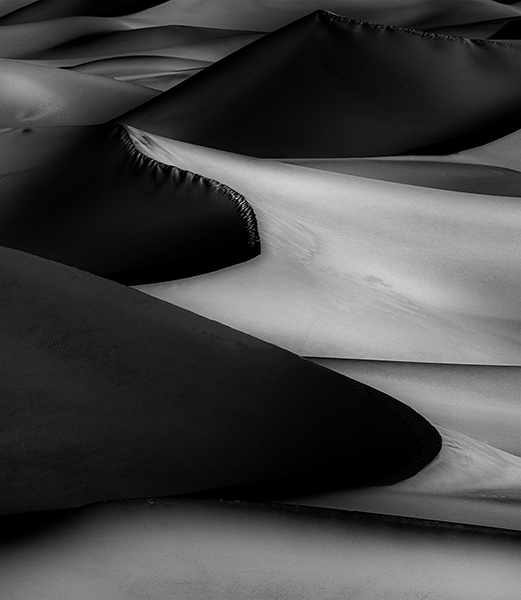
150-600mm (450mm), F/10, 1/60 sec., ISO 125
Click image to view larger
This one is my favorite of this set. These sand dunes look like some sort of fabric, like satin, which is interesting, as sand is a course material. But it smooths out when it’s converted to black and white. The dunes also resemble many of the waves images I captured, in that both the dunes and waves peak and drop, repeatedly. A friend pointed out to me recently that the white dune in the middle of this image looks kind of like a shark’s mouth, which I hadn’t noticed myself initially. Now I see it every time. That’s the beauty of art—the interpretation lies with the viewer.
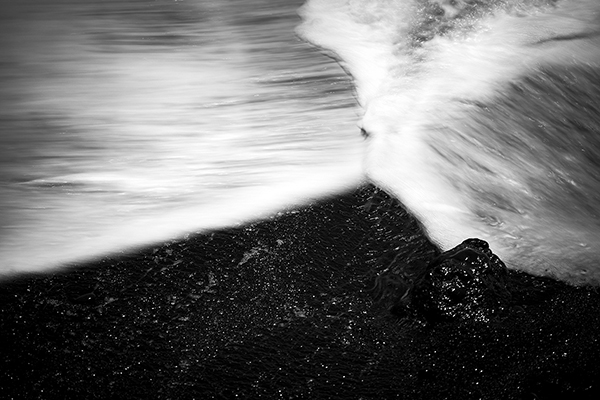
70-200mm (200mm), F/2.8, 1/4 sec., ISO 125
Click image to view larger
I was on top of a cliff, shooting down onto the beach, to capture this angle and perspective, which you’ll see in a few of the images here. This photo was an intentional capture in which I was trying to document the moment when two waves collide into each other. You have the crashing, and then the pushing away from each other afterward as they recede.
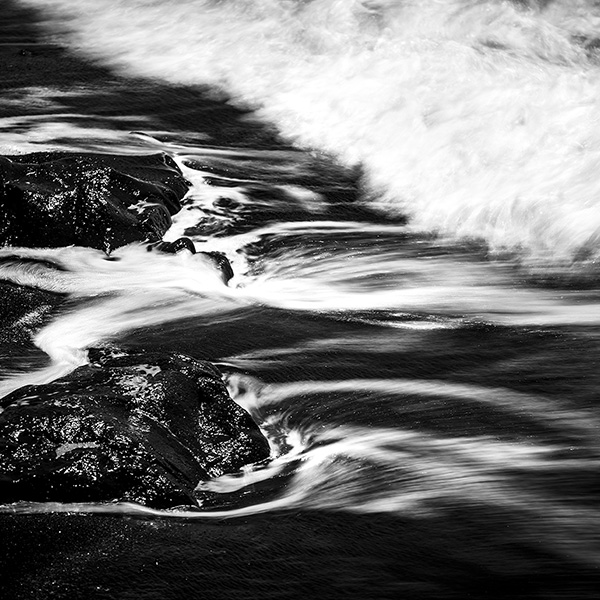
70-200mm (200mm), F/2.8, 1/4 sec., ISO 125
Click image to view larger
As we’ve gone through COVID, I was trying to tap into the sense of darkness that we’ve all felt at one time or another, as well as the erratic nature of the pandemic: One minute it would feel like we were coming off it all, then the next we were shutting down again. The contrasts in the photo are also suggestive of that metaphorical contrast.
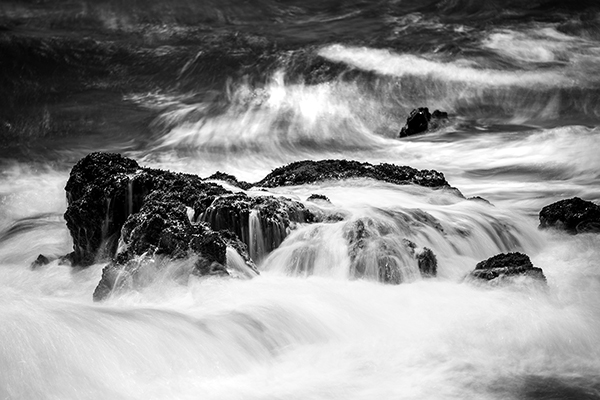
70-200mm (200mm), F/2.8, 0.6 sec., ISO 80
Click image to view larger
I used a 10-stop filter for this image. I love the contrast of seeing the silky smoothness of the wave that’s already crashed over the rocks, compared to the next wave that’s headed into the rocks—one slowly washing off as the other moves in, with an almost seamless transition.
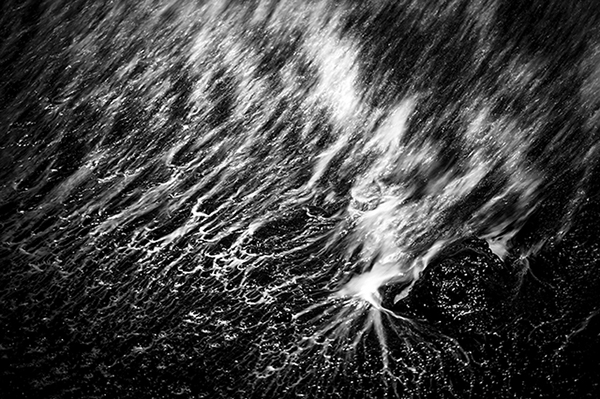
70-200mm (200mm), F/2.8, 1/4 sec., ISO 125
Click image to view larger
This photo represents a sense of renewal to me: The waves wash in slowly, then recede, leaving everything refreshed. I know for black and whites you’re supposed to have more midtones, similar to what you see in “Dune Waves.” But this felt like it should have a darker feel, considering the times we’ve been in lately. It would feel good to have the tide come in and take all of the darkness away, to give us a fresh start.
To see more of Greg Piazza’s work, go to www.gallery7nine.com.
More Photo Tips | Watch Videos | Learn More About Tamron Lenses | Photo Gallery
